Nollekens 'Faith' Statue for Maria
in the Howard Chapel
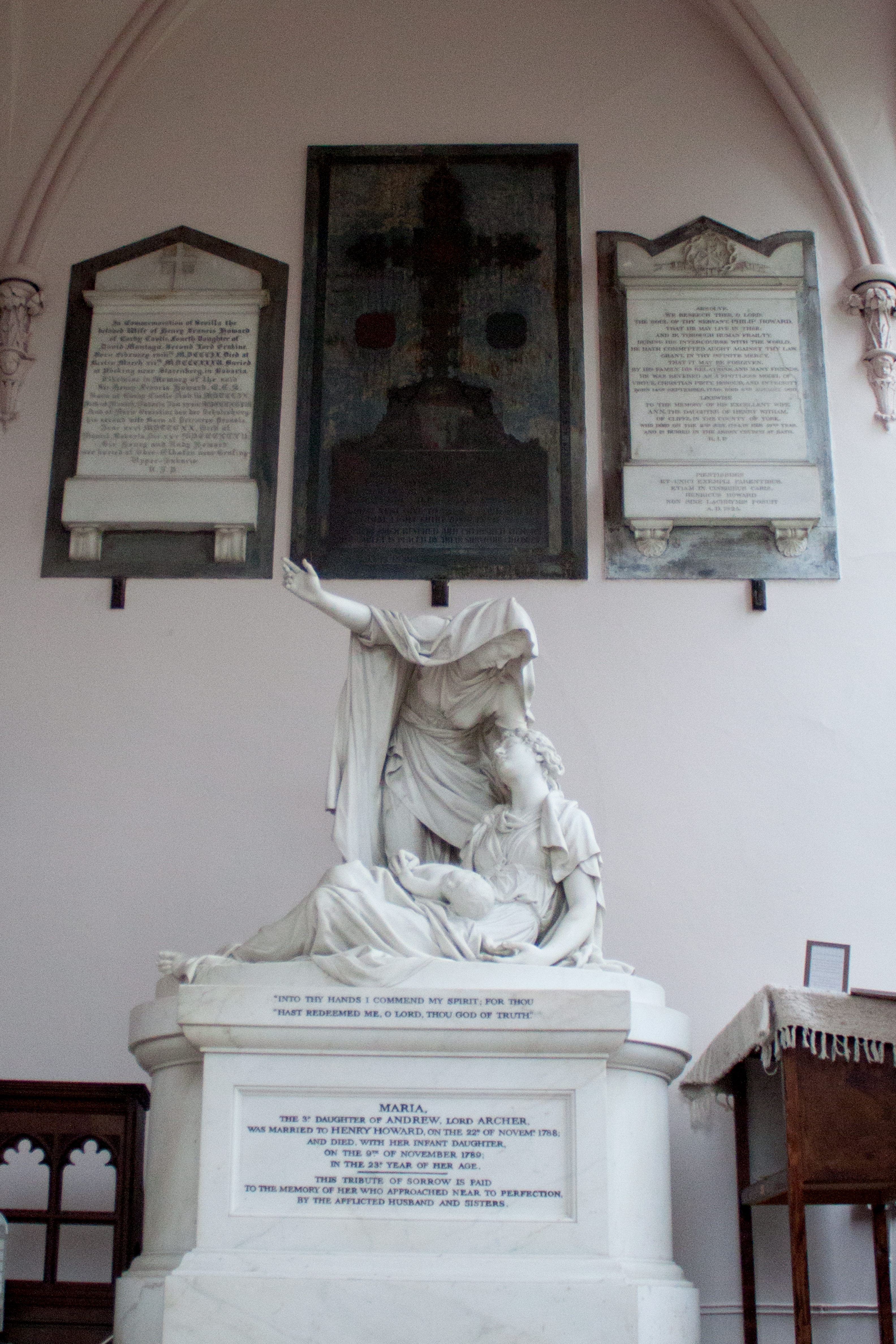
The sculpture is called ‘Faith’, reflecting the hope and certainty that death is not the end of life.
Henry Howard and Maria, daughter of Lord Archer of Umberslade, married in November 1788. Tragically Maria died just 12 months later in childbirth, together with her baby daughter. She was 22 years old.
Henry was heartbroken and commissioned one of the greatest sculptors of the day, Joseph Nollekens, R.A. to create a memorial monument. The statue shows a draped female figure, ‘Faith’, pointing upwards with one hand, whilst with the other she supports the head of the dying mother, who holds her baby on her lap.
The inscription reads: ‘This tribute of sorrow is paid to the memory of her who approached near to perfection by the afflicted husband and sisters’.
Henry paid £1,500 for the work, a vast sum in those days, and it is considered to be Nollekens’ greatest work. Certainly, he was very proud of it, and it’s said he burst into tears when he discovered where it would be housed as he felt so few people would see it.There is an image of him working on the statue on his tomb in St. Mary’s Church, Paddington Green, London. (see below).
An inspired visitor
One visitor to Wetheral Church, the poet William Wordsworth, was so moved by the statue that he felt it worthy of a sonnet:
Stretched on the dying Mother’s lap, lies dead
Her born Babe, dire issue of bright hope!
But Sculpture here, with divinest scope
Of luminous faith, heavenward hath raised that head
So patiently; and through one hand has spread
A touch so tender for the insensate Child.
Earth's lingering love to parting reconciled.
Brief parting ~ for the spirit is all but fled;
That we, who contemplate the turns of life
Through this still medium, are consoled and cheered;
Feel with the Mother, think the severed Wife
Is less to be lamented than revered;
And own that Art, triumphant over strife
And pain, hath powers to Eternity endeared.
Viewing
The statue can be viewed through the glazed screen between the chapel and the chancel. If you wish to see it more closely, you can join us on Sundays for our 11.15am service and the door can be opened for you, or else by prior arrangement with Rev Graeme Skinner 01228 561358
The Howard Chapel
The Howard Chapel is built above the mausoleum of the Howard family of Corby Castle just across the River Eden. The vault holds 25 members of the Howard family and was used from 1663 to 1882, when it was finally sealed. The chapel, built of red sandstone, dates from 1791 and is of Gothic revival style. It has a battlemented parapet and gables with decorative stone spires, and the low pitched roof is covered with Westmorland slate. The Chapel was built to house this white marble statue as a memorial to Maria Howard.
Nollekens
Joseph Nollekens is listen in the monuments in St Mary Paddington Green, West London.
Nollekens own memorial plaque (d. 1893) shows him working on this statue, illustrating the importance of tis work to him.
Joseph Nollekens, RA who died in 1823 is commemorated by this tablet below. It was made by a later sculptor, William Behnes. Nollekens is seated and holding a hammer. He is working on 'Faith'.
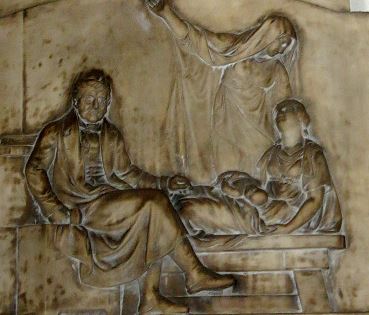
Joseph Nollekens by Mary Moser (1744–1819). Yale Center for British Art.
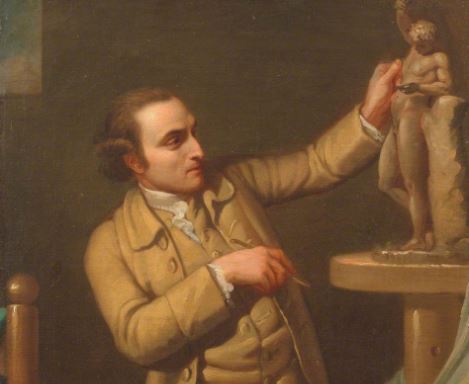
The Victoria and Albert Museum
Nollekens made a model for the Faith statue in terracotta.
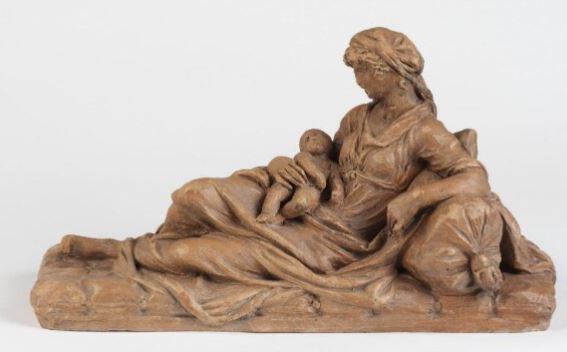
A preliminary sketch for the sculpture seems to show the figure Faith in a more 'head in hand' desperate pose. The actual sculpture seems more hopeful: pointing to heaven.
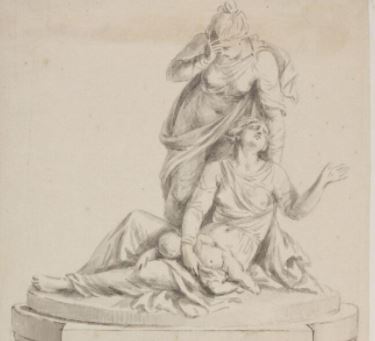
These are both kept in the V&A Museum in London.
Some reflections on the statue called 'Faith'
An opportunity to reflect on some pictures and words.
Pointing the way to hope
Wordsworth wrote, 'But Sculpture here, with divinest scope
Of luminous faith, heavenward hath raised that head'.
Colossians 1v5 'The faith and love that spring
from the hope stored up for you in heaven
and about which you have already heard in the true message of the gospel.'
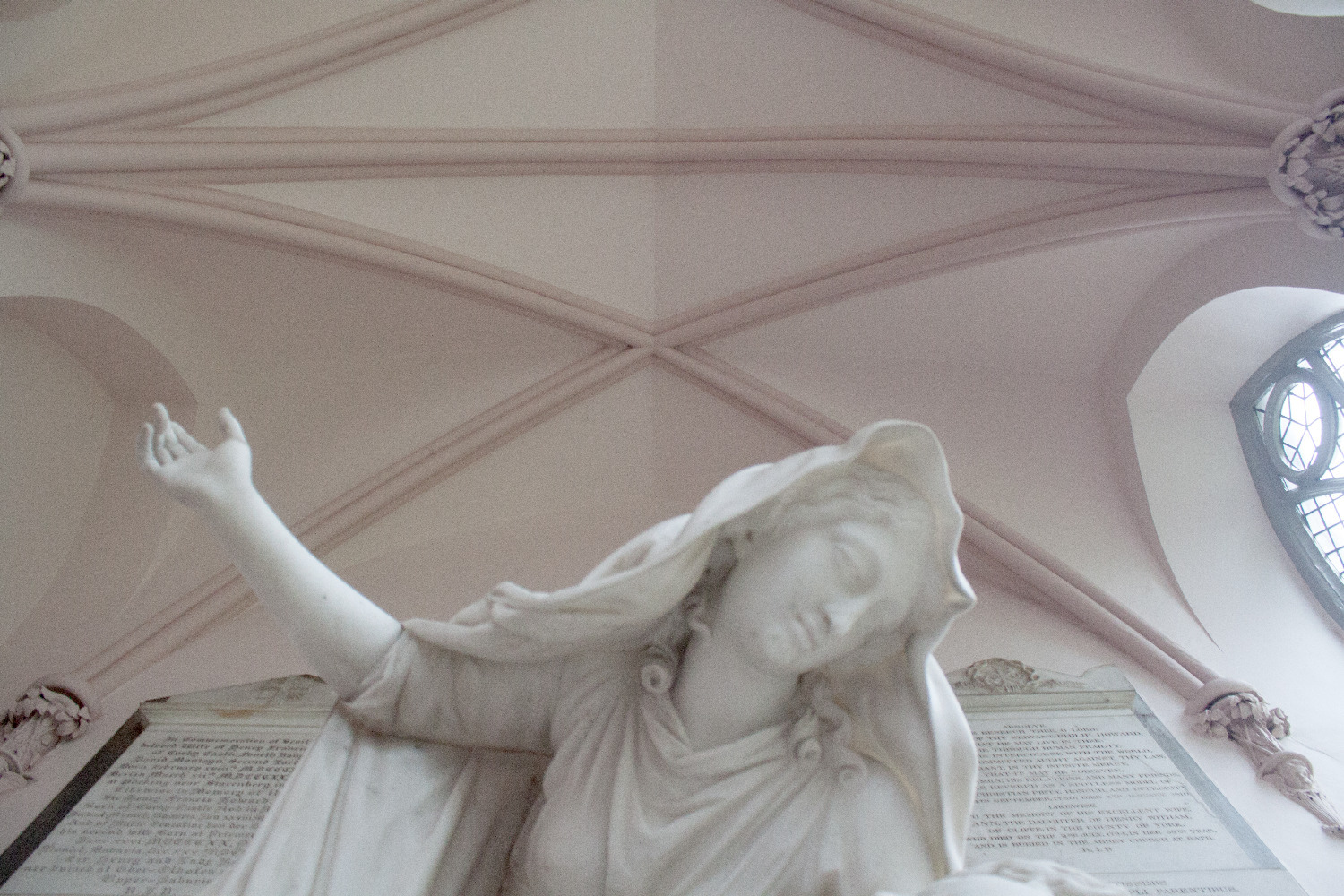
The tender touch
Wordsworth
'Through one hand has spread
A touch so tender.'
Luke 5v13 'Jesus reached out his hand and touched...'
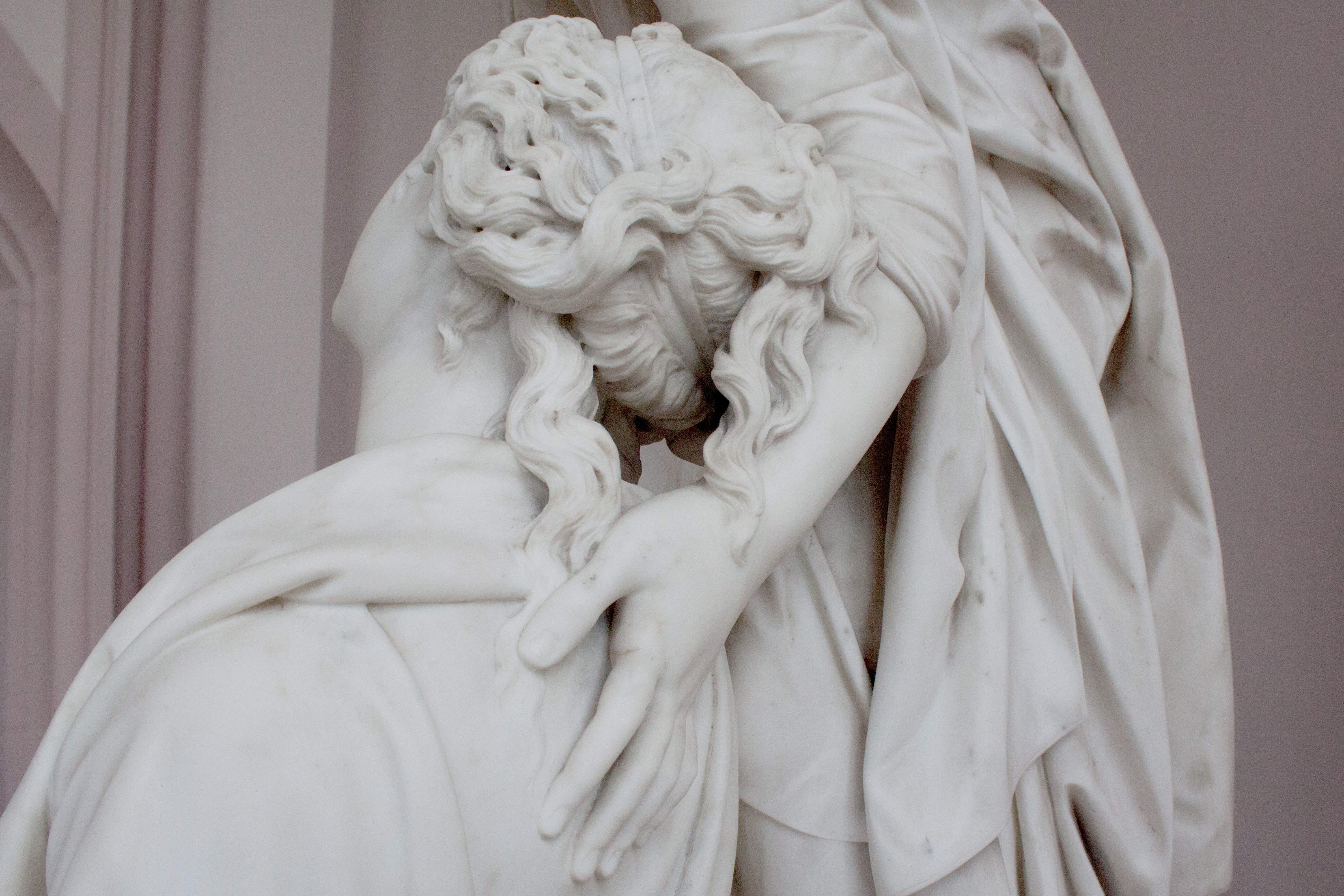
The intimate gaze
Faith looks deep into the face of the woman.
What do you see in this moment and how does it speak to your soul?
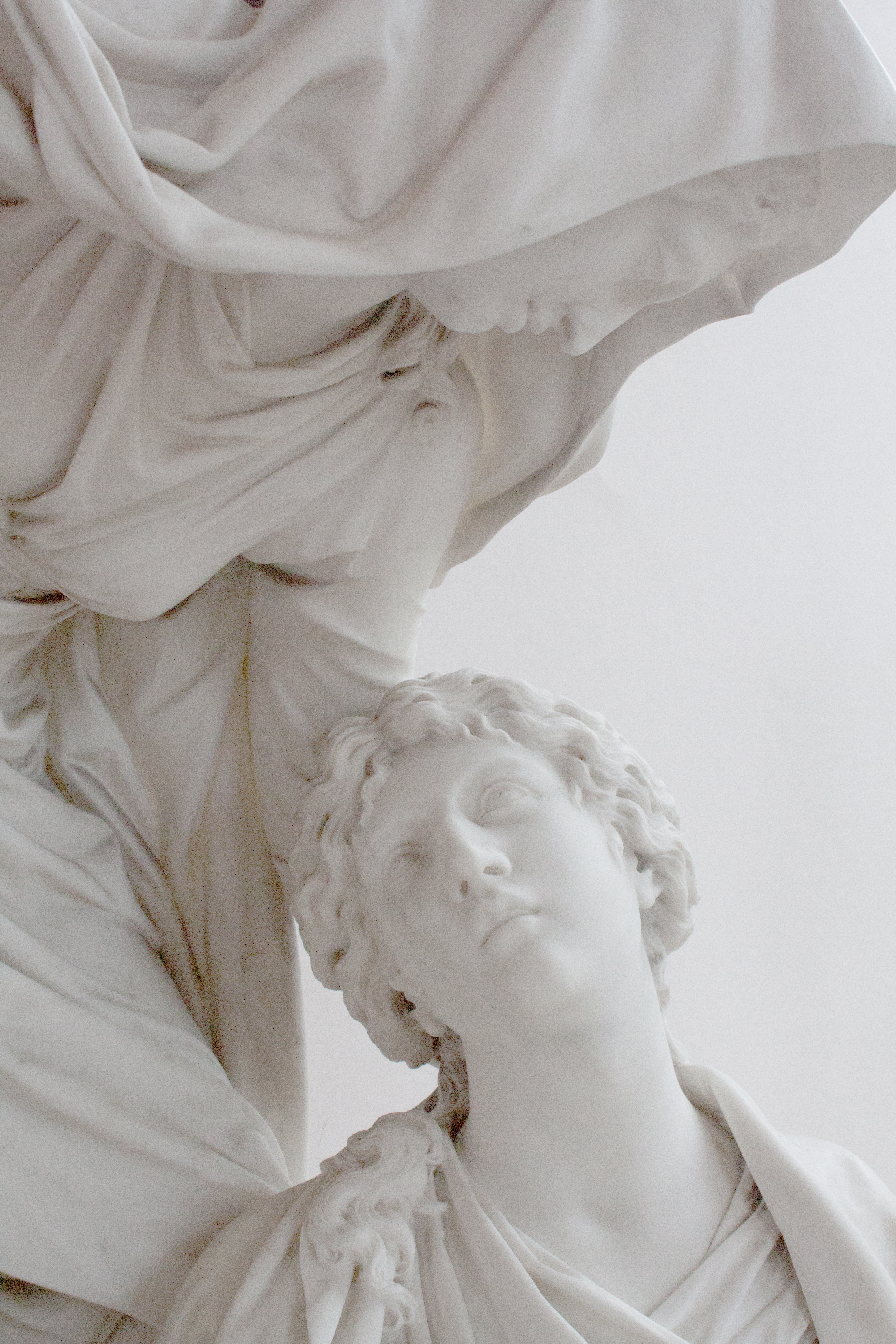
The feet
Faith's foot come to bring good news of a future certainty.
Romans 10v14-15 'How, then, can they call on the one they have not believed in?
And how can they believe in the one of whom they have not heard?
And how can they hear without someone preaching to them?
And how can anyone preach unless they are sent?
As it is written: 'How beautiful are the feet of those who bring good news.'
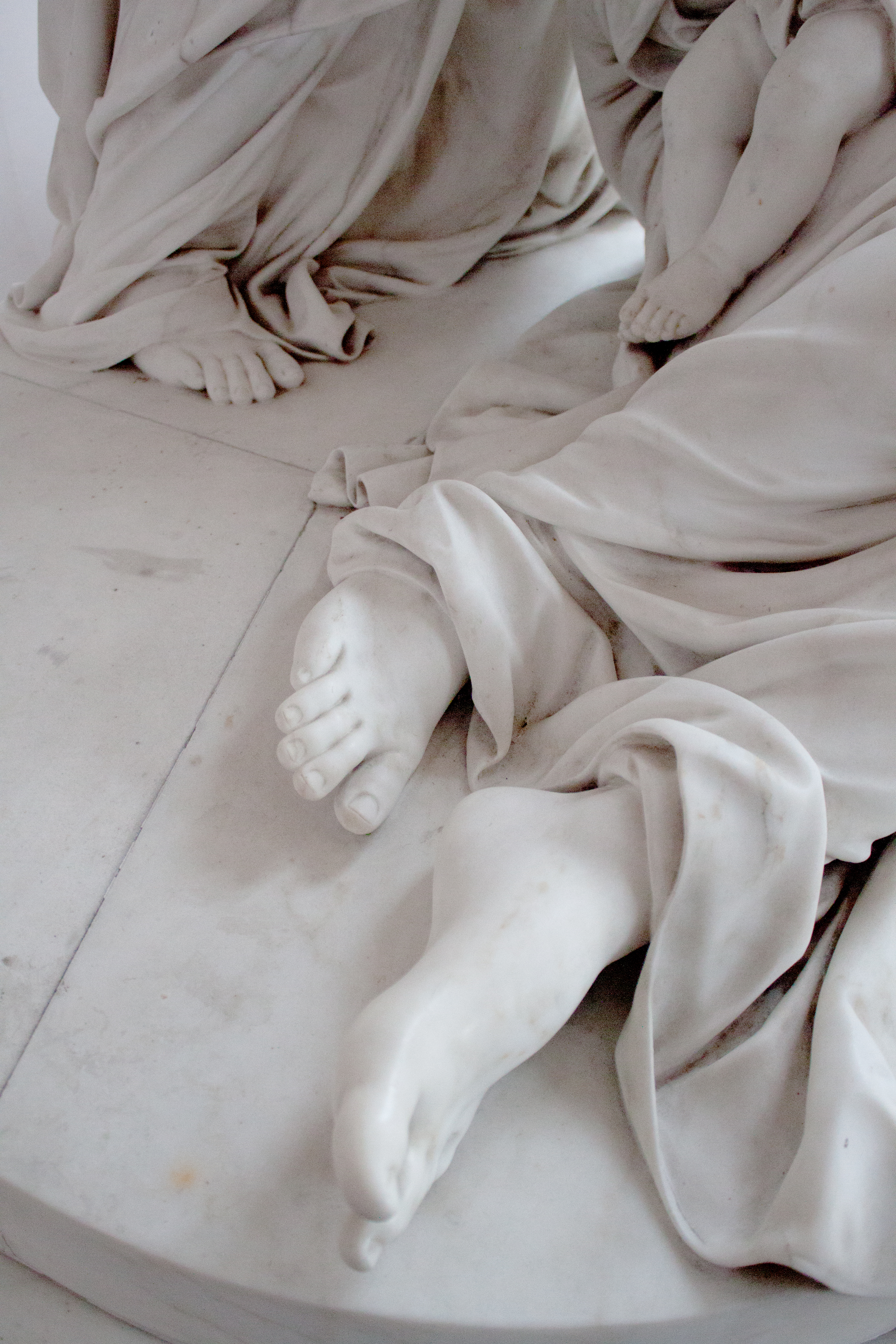
The child and mother's hand
Luke 18v16 'Let the little children come to me, and do not hinder them, for the kingdom of God belongs to such as these.'
(f you know or are a Bereaved Parent then Care for the Family offer support)
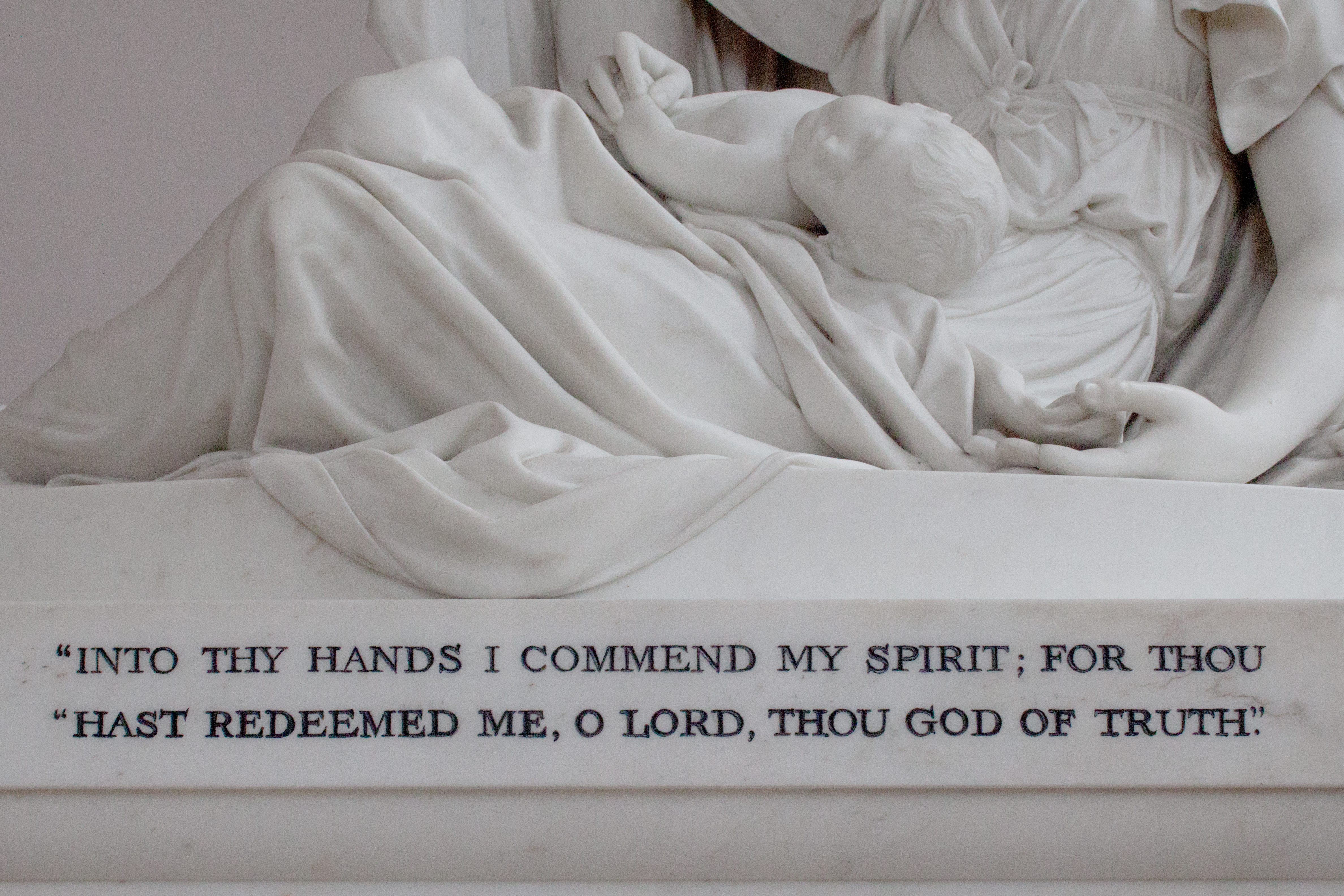
The Word of hope.
Wordsworth invites us to 'contemplate the turns of life' as the angel stands next to a Bible, the source of our hope.
John 3v16 'For God so loved the world that he gave his one and only Son,
that whoever believes in him shall not perish but have eternal life.'
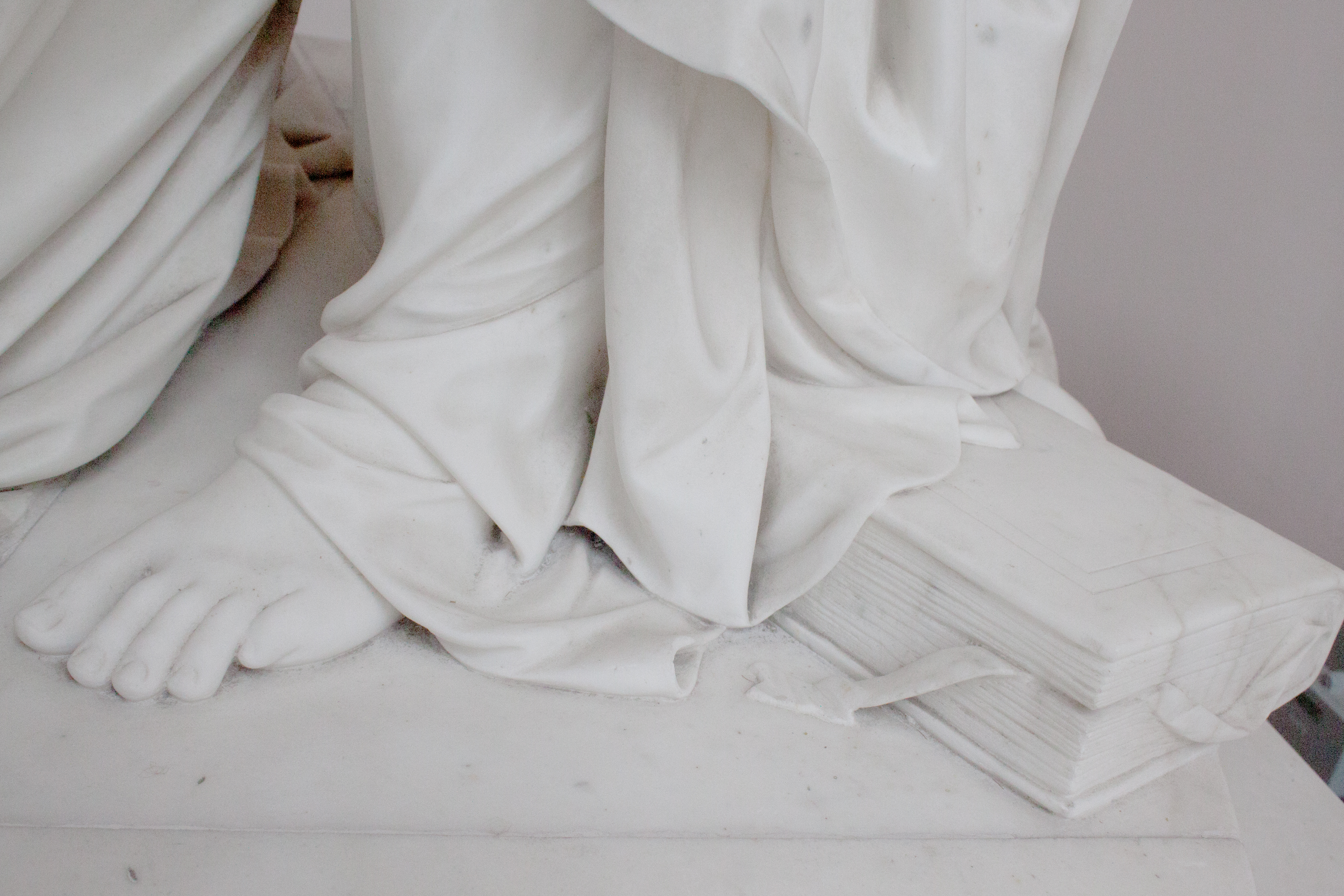
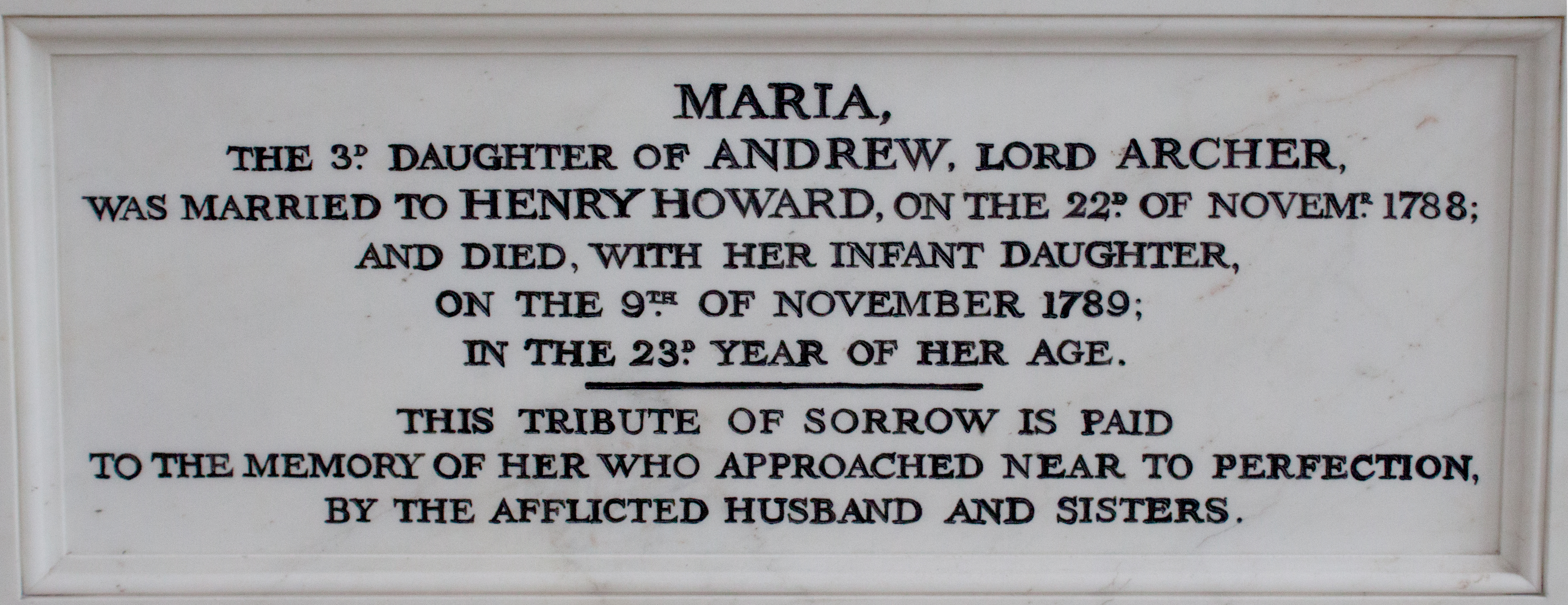
An interesting 'extra' on Nollekens
Which artist was favoured by King George III?
extract from the above link
Nollekens was British-born but his father was Flemish; he had trained with the Flemish sculptor Peter Scheemakers, and had then finished his education in Rome under an Italian, Bartolomeo Cavaceppi. And in addition to these Continental credentials, Nollekens lacked the personal attributes which the king admired. Where Bacon was known for his sobriety and his piety, indeed, he was mocked for it by his fellow artists, Nollekens was a Catholic and not even a devout one—a circumstance the king noted when Nollekens failed to keep his summons to Buckingham House on a feast day, and then discovered the sculptor had not even been to Mass but had gone to see the lions at the Tower instead. Nollekens also had a reputation for miserliness, his personal habits were uncourtly, and he became highly displeasing to the king. He could be garrulous irrespective of the rank of his sitter and when George III sat to Nollekens, the sculptor spat on the clay to keep it wet. Cunningham and Smith tell us that Bacon, by contrast, took pains to bring a silver syringe and a basin of water when the king sat to him so that he could wet his clay without offending royal delicacy by using his own saliva.
Link to the Howard Chapel Restoration Appeal in the 1980s